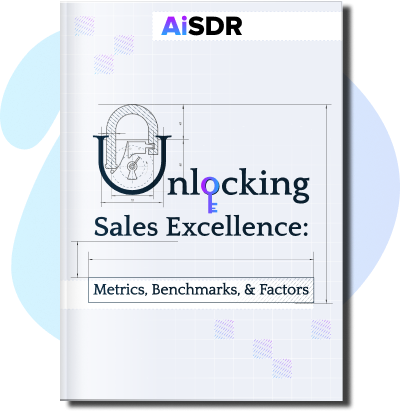Getting the Most Out of Your Leads: Lead Scoring Models & Best Tools

Is there such a thing as ‘too many leads’? Believe it or not, but yes. Learn about lead scoring so you can separate the good leads from the bad
Is there such a thing as “too many leads”?
Believe it or not, yes.
If you’ve gone from just a handful a day to hundreds, your sales team is going to be overwhelmed trying to follow up with each one. To make matters more complicated, many might not even plan on buying from you. They could be job seekers, spammers, or even your competition.
That’s where lead scoring comes in. Lead prioritization systems help you avoid getting bogged down in meaningless requests by providing a reliable way to gauge a lead’s likelihood to buy.
What is lead scoring?
Lead scoring is a tactic for evaluating whether or not a lead could turn into a customer.
For example, you might assign a certain number of points to a lead depending on the actions they take.
Subscribe to your blog? 10 points (to Gryffindor!). Request a demo? 50 points.
Then once the lead hits a certain threshold, your sales team may decide that the lead is sufficiently qualified for a sale.
Which actions should you use for scoring?
This is the central question. Lead scoring as a tactic is only as good as the set of interactions and attributes you focus on.
As a rule of thumb, you should look for patterns in the actions your actual customers take.
For instance, if 80% of your customers viewed your Pricing page before requesting a demo, you can safely assume that a lead who has seen your Pricing page is more likely to buy than one who hasn’t.
You can use common sense up to a certain point if you don’t have enough customers to establish a reasonable pattern. As an example, a lead who entered “Student” as their job title is more likely doing research than looking for a product to purchase.
In the end, there’s no universal answer about which interactions are best for lead scoring. Rather, your ideal customers and the lead behavior data you collect will dictate the best lead scoring system for your needs.
Lead scoring models
Different lead scoring models prioritize certain actions or attributes over others. Here’s a quick look at the most common.
Online behavioral
This is arguably the most straightforward lead scoring model. It requires you to analyze the behaviors of your leads and how they’ve interacted with your brand. You might assign a positive value if they fill out a form or search for specific information, or you might jot down a negative value for visiting the Careers page.
Firmographic
The firmographic model necessitates a closer look at your companies. If your product is for large companies and enterprises, then you’re likely to score enterprises higher and start-ups lower. The same applies if you’re targeting a certain industry, location, or some other company attribute.
Demographic
Getting a lead from a company that matches your ideal customer profile is great, but it’s even better when this lead is an actual decision-maker. With demographic scoring, you can assign or subtract points based on the lead’s department and seniority level. This lead scoring model works well in combination with firmographic scoring.
Engagement
This model relies on watching a lead’s behavior over a certain period. How often do they open your emails? How frequently do they like, comment, or share your social media posts? Each of these actions can earn them points.
Based on the customer journey of your current clients, you can predict when a lead is ready for a sales offer. For example, the best moment might be after they open four emails or interact with three posts.
Purchase intent
Highly praised by B2B marketers, this model offers the most sophisticated insights into your leads’ intentions. It relies on monitoring their behavior across a wide range of third-party resources. You’ll want to look into questions such as whether they recently googled your product or visited the websites of your competitors.
The challenge with purchase intent scoring is that the data might be challenging to obtain. However, cutting-edge lead scoring tools can tackle this by scraping data from the web.
Whichever lead scoring model you prefer, there are some best practices you can follow to get the most out of it.
Best practices for lead scoring
How can you score your leads effectively? Here are some tips:
- Define your criteria for qualified leads
What makes someone your potential customer? Their company size? Industry? Geography? Are they family-owned or a start-up? Make sure to include everything that matters.
- Analyze your conversion process
What steps do your customers typically complete before buying? If they watch your free webinar before booking a demo, then you might offer a demo once they finish the webinar.
- Assign points for every action and attribute
This may seem like a no-brainer, but your lead scoring grid shouldn’t have blank spaces. Additionally, high-intent actions should score higher than low-intent actions.
- Check and update scores regularly
Your customers may already be on a different journey than they were six months ago. Make sure your attributes and scores reflect this reality.
- Ensure your sales and marketing teams are aligned
Both teams should work together to develop a lead scoring system. The marketing team can contribute lead behavior data, while the sales team is in a better position to identify patterns among actual customers.
- Implement negative scoring and score degradation
Negative scores are important for removing leads that aren’t worth pursuing. For example, if a lead uses a competitor’s email domain, you might assign a high negative score so that they don’t land on your team’s priority list. Similarly, you might lower scores for leads who haven’t interacted with your brand in some time so that you focus on recent prospects.
Lastly, while manual lead scoring is a tried-and-true method, it’s ill-suited for managing the day-to-day of a fast-growing company. Instead, lead qualification tools can automate the scoring so that your team can focus on the selling.
Best lead scoring tools
Lead scoring has benefitted from several recent AI advancements. As a result, you can choose between established lead analytics platforms and cutting-edge AI-based lead scoring tools.
AiSDR
AiSDR is a dedicated sales AI for lead generation that can take over many of the routine tasks typically performed by sales reps. In addition to scoring leads according to your criteria, it can use buyer intent from sources like HubSpot and LinkedIn to craft and send personalized emails.
Salesforce Sales Cloud
The Einstein Lead Scoring tool by Salesforce uses AI to predict a lead’s behavior from your customer data. The scores get automatically re-evaluated every ten days. If you lack actual customer data for a predictive model, the platform will use a global model based on anonymous customer data.
Apollo.io
If you’re using Apollo, you’ll need to set your own scoring criteria. Afterward, the platform will use your criteria to automatically evaluate new leads. Their tool can also be synchronized with Salesforce or HubSpot.
HubSpot
While HubSpot doesn’t offer a dedicated lead qualification tool, you can set up score properties for your lead database on this platform. The algorithm will qualify all new entries according to your criteria.
LinkedIn Sales Navigator
LinkedIn Sales Navigator is designed for lead scoring during LinkedIn outreach. Since this social network makes the company size and contact job title data readily available, this tool can be particularly convenient when using the firmographic/demographic lead scoring model.
The best lead scoring software tools on the market all have robust features, but before you subscribe to one, you’ll need to check whether or not it fits your business needs.
How to choose lead scoring software
With so many attractive options, choosing a lead scoring platform is a tough decision.
These four criteria can help you determine which lead scoring solution fits your sales team best:
- Functionality
You might not need all the bells and whistles that an established (and pricey) platform has to offer. In this case, opting for a more agile and focused solution may be wiser.
- Pricing
Automated lead qualification tools can get pricey quickly depending on how many leads you need to score. Alternatively, you can try a solution that includes lead scoring as an automatic feature as part of a larger subscription. This will help keep costs under control while ensuring a positive software ROI.
- Integrations
If your lead qualification software doesn’t connect with your CRM and other outreach tools, chances are your team won’t use it. The last thing you want is to pay for something you’re not using.
- User-friendliness
Whether or not your sales team loves or hates the new tool often boils down to how user-friendly it is, even if it’s a matter of personal taste. Unfortunately, there’s no way to gauge this until you actually try out the platform.
Score your leads timely and efficiently with AiSDR
AiSDR is an AI sales assistant that helps your sales team quickly carry out their responsibilities, from prospecting and lead scoring to content creation and campaign management.
Once it’s found the right customers that match your target audience, AiSDR uses a lead’s LinkedIn activity and your HubSpot data to match the way you speak and guide leads through the customer journey.
Book a demo to see AiSDR in action.












